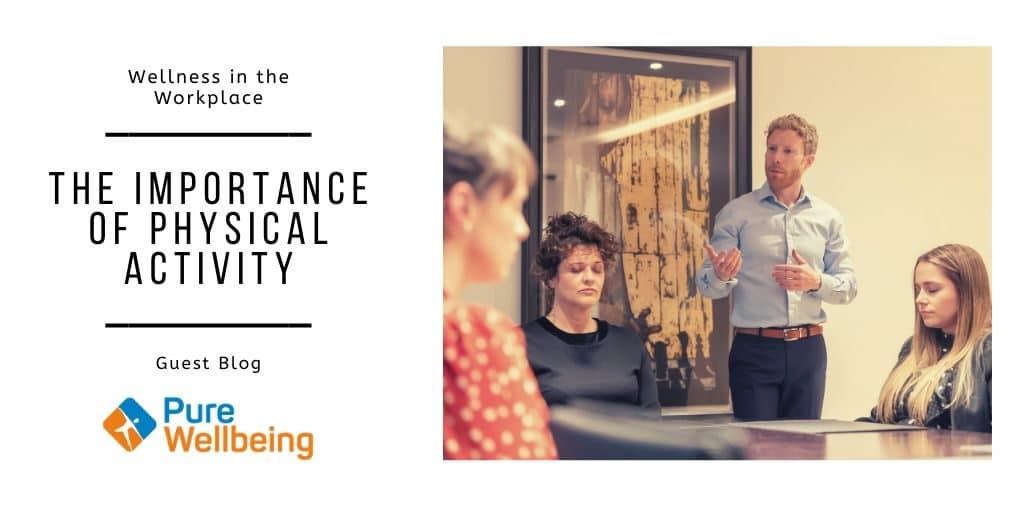Blog
Wellness in the Workplace | the Importance of Physical Activity
By Conor Dolan MS, Exercise Science & Health Promotion Director, Pure Wellbeing, 19th November
Recent research in Ireland reports that only 32% of Irish adults get the recommended weekly amounts of aerobic activity (150 minutes). This is pretty low, but even lower again is the percentage of adults getting recommended strength-based exercise, which is only an estimated 15-20% (guidelines for exercise prescribe both types). So, chances are that many people in any workplace are not reaching these levels. This is something of a problem, as the recommended levels are the threshold amounts necessary to get most of the benefits and don’t necessarily represent the ideal or optimal amounts.
Benefits of Workplace Wellbeing
If all adults were to at least achieve the recommended threshold levels, it would have a massive impact on illness prevention, productivity and stress in the workplace. There are few things that have the near universally-beneficial outcomes of regular physical activity. These include better hormonal health; a lower incidence of many major illnesses, including cardiovascular disease, diabetes and certain types of cancer; a lower risk of depressive symptoms, in both adults and adolescents; and fewer days of poor mental health per month. Active adults are also less likely to report feeling highly stressed, and exercise is shown to have protective effects against stress for up to 13 hours afterwards, depending on the level of effort involved. This is important given that job demands are generally considered to be increasing and stress is now a leading cause for workers to opt to change jobs.
However, available evidence shows that no matter how sizeable the benefits are, most people still struggle to get the recommended levels of physical activity, and this is where the existing model of health and wellbeing can be said to have largely failed. That model is essentially one of ‘individual responsibility’; namely, the individual is deemed to be solely responsible for their wellbeing. As work has become more demanding, and time pressures, technology use and work stress have increased, the traditional model has proven inadequate for all but a small minority of people.
Wellness in the Workplace Model
Wellness in the workplace is a model which offers new hope for stretched employees. Essentially a model of shared responsibility, the wellness model involves allocating employees some scheduled time to work on their wellbeing at the workplace, with the balance of time invested on the employee’s own. It can give some cause for optimism in areas such as meeting exercise recommendations, eating better or getting a handle on personal stress levels. That optimism can translate into increased action towards a healthy lifestyle and ultimately a healthier, less stressed employee who is less likely to leave. This means that there are benefits for employers here too. Ultimately, a wellness program can be a strong source of value for employees and a considerable addition to their overall work proposition.



